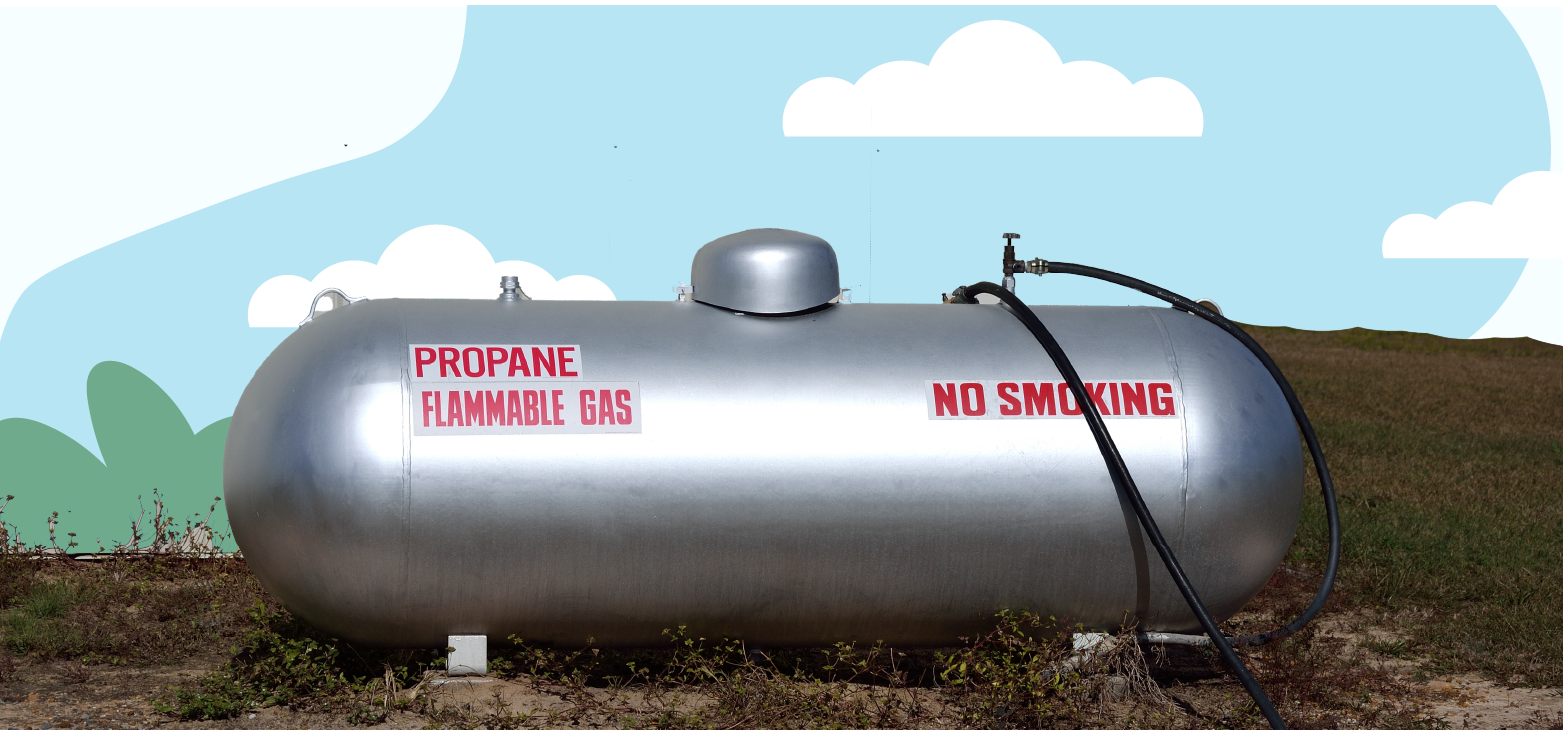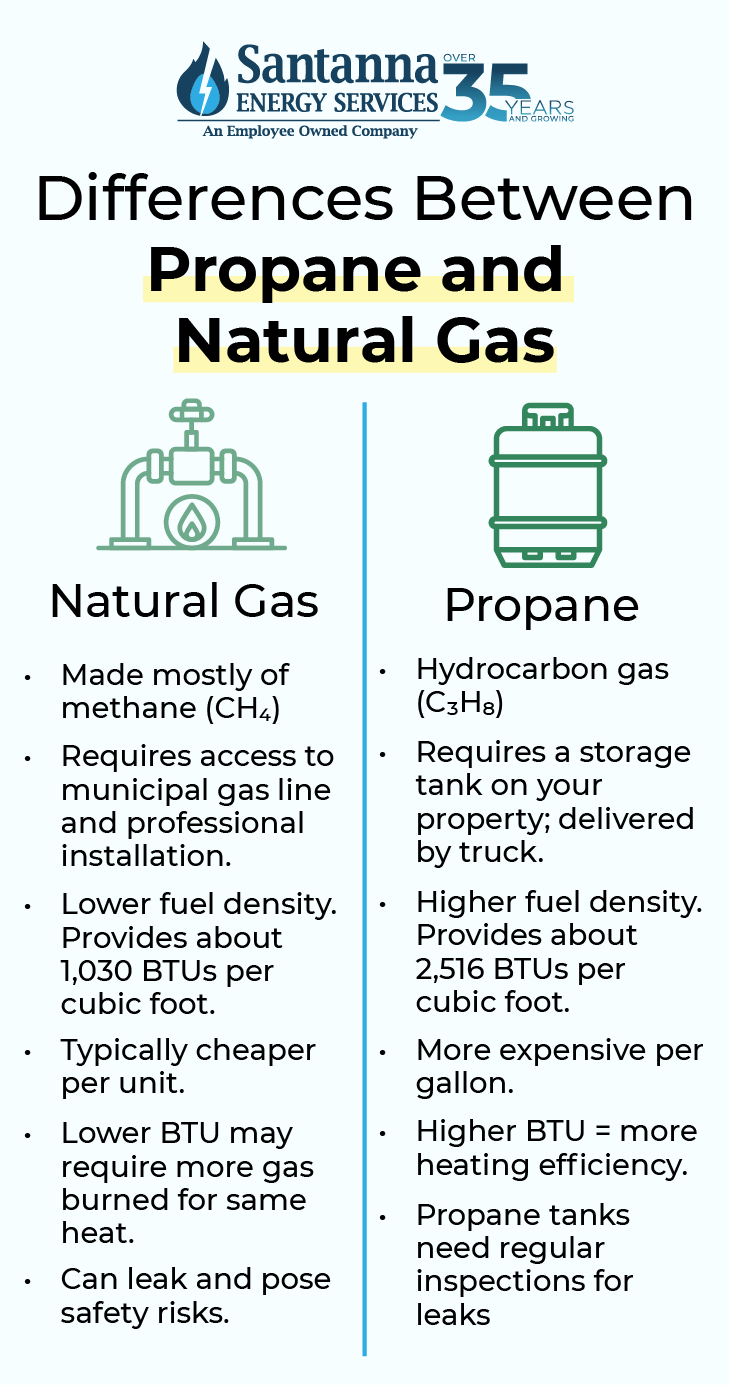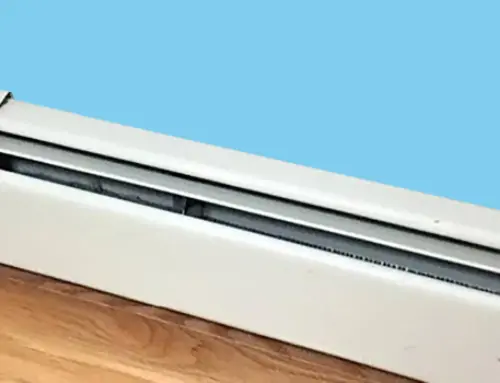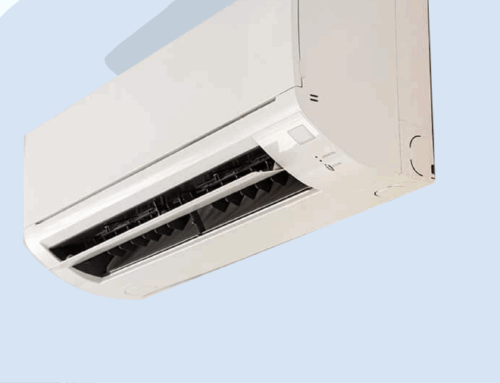Natural Gas vs. Propane: Differences and More
by Tyler Castle
24.6 min read

When it comes to fueling your home, two of the most common options are natural gas and propane. While they may seem similar at first glance, they're actually quite different in how they're delivered, stored, priced, and used. Whether you're building a new home, upgrading your heating system, or just exploring energy alternatives, understanding these differences is key to making the right choice.
In this guide, we'll break down how natural gas and propane compare in cost, efficiency, availability, safety, and more so you can decide which fuel works best for your home and lifestyle. By the end, you'll have the knowledge you need to choose confidently and power your home wisely.
What is Natural Gas?
Natural gas is a type of energy that comes from deep underground. It's a fossil fuel, which means it was formed from ancient plants and animals over millions of years. The main ingredient in natural gas is something called methane—a simple gas made up of carbon and hydrogen. But natural gas also contains smaller amounts of other gases, like carbon dioxide and water vapor. People use natural gas every day to heat their homes, cook food, produce electricity, and even make certain chemicals and materials.
Natural gas is trapped underground in different places. Sometimes, it collects in large cracks or spaces between rock layers—this is called "conventional" natural gas. Other times, it's stuck inside tiny spaces within certain rocks like shale or sandstone this is known as "shale gas" or "tight gas." Natural gas is also often found along with oil, and in coal deposits (that's called coalbed methane). We can find it on land, under the ocean floor, and deep beneath the Earth's surface.
What is Propane?
Propane, also known as liquefied petroleum gas (LPG), is a type of gas that's commonly used in homes and businesses for heating, cooking, and fueling appliances. Although it's gas at normal temperatures, propane is easily compressed into a liquid, which makes it convenient to store and transport in tanks—like the ones you might use with your grill or home heating system.
By itself, propane is colorless and odorless, so gas companies add a harmless chemical called ethyl mercaptan to give it a distinct smell (like rotten eggs). This makes it easy to detect if there's a leak—a critical safety feature.
Propane is a byproduct of two processes:
- Natural gas processing – When natural gas is extracted from underground, it contains a mix of gases. Propane is one of the heavier gases that's separated out during processing.
- Crude oil refining – Propane is also produced in small amounts when crude oil is refined into gasoline and diesel.
Today, most of the propane in the U.S. comes from natural gas processing, particularly from shale gas fields like the Marcellus Shale in the Northeast. As natural gas production has increased, so has propane output— so much so that the U.S. now produces more propane than it consumes and has become a net exporter, driven by growing demand in Asia.
Is Natural Gas the Same as Propane?
Natural gas and propane are closely related—they're both fossil fuels, both mostly produced in the U.S., and both commonly used to heat homes and power appliances. But when it comes to how they're stored and delived, they are not the same. Here's how they differ:
When it comes to delivery, natural gas stays in its gaseous form and is delivered through underground pipelines directly to your home. If your neighborhood has gas lines, you're connected to a constant fuel supply—no need for tanks or deliveries.
Propane, by contrast, is compressed into a liquid and stored in tanks. It's either sold in portable canisters (like the ones you use for a grill) or delivered by truck to a larger tank installed on your property.
This major difference affects homeowners; with natural gas, you don't have to monitor fuel levels or schedule refills—you've got an "always-on" fuel source. However, with propane, you'll need to keep track of your tank's fuel level and arrange deliveries to avoid running out.
Bottom line, natural gas is piped; propane is portable, and they're not the same. This means propane gives you more flexibility in rural or off-grid areas, while natural gas is generally cheaper and more convenient where pipelines are available.
While both fuels can power heating systems, stoves, water heaters, and more, they differ in how they're delivered, stored, and maintained. If you have access to a natural gas line, it's usually more convenient and cost-effective. If you live in a rural area or want on-site fuel storage, propane gives you more independence.

Difference Between Propane and Natural Gas
While both propane and natural gas are popular for their energy-efficiency and are used for similar purposes like heating and cooking, they differ in many ways. Aside from delivery and how they're stored, propane and natural gas they differ in how they're priced, and even how much heat they produce. Here are some of the biggest differences between propane and natural gas you should know if you find yourself stuck between energy sources:
Top Differences: Natural Gas vs. Propane
| Category | Natural Gas | Propane |
| Composition & Environmental Impact |
|
|
| Installation Process |
|
|
| Energy Used |
|
|
| Cost of Fuel |
|
|
| Efficiency |
|
|
| Safety Considerations |
|
|
| Availability & Access |
|
|
| Emissions |
|
|
| Maintenance Needs |
|
|
Composition and Environmental Impact: Natural Gas vs. Propane
Natural gas and propane are both fossil fuels, but they differ in composition and environmental consequences. Natural gas is primarily composed of methane the second-largest contributor to climate warming after carbon dioxide. While it burns cleaner than coal or oil, methane leaks from extraction and pipeline infrastructure pose a significant environmental concern.
Propane is made of a hydrocarbon gas (C₃H₈) stored as a liquid under pressure. It burns cleaner than other fossil fuels, emitting fewer carbon emissions overall than that of natural gas. Propane may have a slight environmental edge because methane leaks from natural gas pipelines have a higher global warming potential.
Installation Process
The installation process for natural gas or propane depends largely on your location and whether your home already has the appropriate infrastructure.
Provided and metered by a public utility, natural gas requires access to a municipal gas line and a professionally installed connection. Installation typically involves running gas piping from the utility source to your home's appliances or equipment (like a generator), followed by a pressure test and inspection by your local Municipal Gas Inspection Office.
If you opt for propane, the installation process involves selecting a safe, level outdoor space that meets clearance guidelines for the propane tank. A licensed installer will perform the tank setup, connect gas lines, and conduct safety tests and inspections. Propane systems may require more upfront work, including excavation, delivery planning, and additional equipment.
Since most U.S. residential appliances are designed for natural gas, natural gas has a slight edge over propane when it comes to the installation process and ultimately deciding between natural gas vs propane for your home.
Energy Used
When it comes to energy used (energy density), propane has a significant advantage over natural gas. To put this into perspective, natural gas provides about 1,030 BTUs per cubic foot of gas used, whereas propane generates approximately 2,516 BTUs per cubic foot—more than twice as much.
Efficiency
Due to its higher BTU content, propane tends to be more efficient in terms of heat output per unit. Appliances powered by natural gas must burn more fuel to achieve the same level of heat as their propane-powered counterparts. If you're heating a large home or colder climate, propane may provide better heating efficiency.
This high efficiency can be beneficial to those who live in colder climates where fuels like propane are used more often for heating homes.
Performance and Preference
Natural gas is typically favored in urban and suburban areas where pipeline access is common and fuel costs are relatively low. Its continuous supply and connection to utility infrastructure make it a convenient choice for everyday use.
On the other hand, propane is often the fuel of choice in rural or off-grid locations without pipeline access. Because it's stored on-site and delivered by truck, propane offers flexibility and independence from public utilities.
Safety Considerations
When exploring the safety consideration from natural gas vs propane, both fuel sources are about equal. If both fuel sources are properly maintained and installed, they're completely safe. However, natural gas can be prone to leaks which typically rise and disperse quickly and can still pose an explosion risk if trapped indoors.
Propane can also be prone to leaks. Being heavier than air, leaked fuel can accumulate near the ground, which creates a pooling hazard that may be harder to ventilate during the event of a leak.
Availability and Access
Natural Gas is only available where pipeline networks exist—mostly urban/suburban areas. If your home is not located near a utility line, accessing natural gas may not be possible without significant infrastructure costs. Propane can be delivered by truck and stored on-site—accessible anywhere, including remote or rural locations. If you're off the grid, propane may be your only option.
Emissions
While both fuels are considered cleaner-burning compared to coal or oil, they differ in their environmental footprints. Natural gas emits slightly more carbon dioxide when burned and poses a unique risk of methane leaks, which significantly contribute to global warming. However, propane burns cleaner with fewer greenhouse gases and less smog-producing emissions.
If you're interested in choosing natural gas to power your home but you're concerned about the environmental impact, consider our Santanna's Earth-Friendly Gas plan! Earth-Friendly natural gas helps offset your emissions by reducing them somewhere else. For added impact, our Earth-Friendly electricity and natural gas plans contribute to reforestation efforts where we plant trees on your behalf with your purchase of an Santanna Earth-Friendly plan!*
Maintenance Needs
In terms of ongoing maintenance, natural gas tends to require less homeowner involvement. Once installed, there's no need to track usage or arrange deliveries—the utility company handles everything.
Propane demands more oversight. Homeowners must regularly check tank levels, schedule fuel deliveries, and ensure the tank remains in good condition. While this extra effort provides more control and autonomy, it also increases the time and attention required to manage your fuel supply. If you prefer a more hands-off energy experience, natural gas is the more convenient option.
Is Natural Gas Cheaper Than Propane?
Natural gas is generally cheaper than propane primarily because it's a direct resource extracted from the Earth, while propane is a byproduct of natural gas processing and oil refining. Below are some reasons on why natural gas is cheaper than propane:
- Infrastructure advantage: Natural gas is delivered through existing pipelines in most urban and suburban areas, which keeps delivery costs low and steady. Propane, by contrast, needs to be delivered by truck and stored in tanks, adding transportation and handling fees to the price.
- Higher production volume: Natural gas is produced in larger volumes in the U.S., than propane especially from domestic shale gas fields. This supply abundance leads to lower wholesale prices compared to propane.
- Fewer delivery costs passed to consumers: With natural gas, utilities spread infrastructure maintenance costs across large customer bases. With propane, each homeowner is responsible for maintaining or leasing their tank, plus paying delivery fees for each refill.
While natural gas is usually cheaper per unit of energy and has lower ongoing delivery and infrastructure costs, the actual savings for your household will depend on your local fuel prices which can vary from region to region, if your home is already connected to a gas line, you avoid costly installation fees and even the efficiency of your appliances.
If you live in an area with natural gas service, it's typically the most cost-effective choice in the long run. But in rural areas without pipelines, propane's portability and higher energy content make it a strong alternative despite a higher per-gallon price.
When comparing energy costs, it's important to look at the price per unit of energy, not just per gallon or cubic foot. As of early 2025, the average residential natural gas price in the U.S. was $12.94 per Mcf (1,000 cubic feet), while propane averaged $2.51 per gallon.
But when we convert both to the same energy unit—BTUs—the difference becomes clear:
Is Natural Gas Cheaper Than Propane?
| Fuel Type | Price | Energy Content per Unit | Cost per Million BTUs (MMBTU) |
| Natural Gas | $12.94/Mcf | ~1,030,000 BTUs | $12.56/MMBTU |
| Propane | $2.51/gal | ~91,500 BTUs | $27.46/MMBTU |
Natural gas is nearly half the cost of propane when measured by energy output. If your home has access to a natural gas line, it's usually the more cost-effective option for heating and fuel use.
Does Propane Burn Hotter than Natural Gas?
Yes, propane does burn hotter than natural gas, and that difference comes down to the fuel's energy content. The amount of heat a fuel produces is measured in BTUs, or British Thermal Units. Propane contains about 2,516 BTUs per cubic foot, while natural gas contains around 1,030 BTUs per cubic foot. In other words, propane provides more than double the energy of natural gas for the same volume.
When it comes to flame temperature, propane also has a slight advantage. Burning propane in air produces an adiabatic flame temperature of about 1,980°C (3,596°F), compared to natural gas (methane) which burns at around 1,960°C (3,560°F). While this temperature difference might seem small, it can matter in situations where higher heat is needed, like certain industrial or cooking applications.
This higher heat output means propane can heat a space faster and may require less fuel to achieve the same warmth as natural gas. However, appliances need to be designed for propane's higher BTU output; using propane in a natural gas appliance without the right adjustments can be dangerous. Because propane is stored in pressurized tanks, it's also portable making it a great option for homes or locations without access to natural gas pipelines.
It's worth noting, though, that while propane delivers more heat per unit, it's often more expensive than natural gas. So when deciding between the two, homeowners need to consider not just the heat output but also their budget, energy needs, and access to fuel sources. In short, propane burns hotter and more efficiently per volume, making it a powerful fuel choice in certain situations, but not always the most economical option.
Propane Gas vs Natural Gas Grill
When it comes to backyard grilling, one of the first decisions homeowners face is whether to go with a propane gas grill or a natural gas grill. While both offer the delicious flavor and convenience of gas grilling, they work differently and your choice will depend on your lifestyle, budget, and grilling habits.
Here's a detailed breakdown to help you figure out which is best for your home. Just like your home, the biggest difference is how they're fueled:
- Propane grills run on portable tanks of liquefied propane gas (LPG). You attach a refillable tank directly to the grill.
- Natural gas grills are connected directly to your home's natural gas line, providing a continuous fuel supply without the need to swap tanks.
Why Choose a Propane Grill?
A propane grill is perfect if you value portability and flexibility. Since the grill isn't tied to a gas line, you can move it anywhere in your yard—or even pack it up for camping and tailgating.
Propane burns hotter than natural gas, letting you sear steaks faster and reach high temps quickly. When it comes to installing, if you don't have a gas line, no problem! Just attach a propane tank, and you're ready to grill.
Lastly, propane grills are great for renters or outdoor entertainers, or campers who may want to rearrange their patio or take the grill on the road. Be sure to regularly monitor propane levels and keep extra tanks handy to avoid running out mid-barbecue.
Why Choose a Natural Gas Grill?
A natural gas grill is ideal for homeowners who grill often and want a permanent, low-maintenance setup. Once connected, you'll never need to refill a tank—it's always ready to go. As a bonus, natural gas is typically cheaper per unit than propane, meaning long-term savings if you grill frequently.
The downside? It's not portable and you're anchored to wherever the gas line was installed. And you may need a professional to handle installation if you don't already have an outdoor gas hookup.
Who is Each Grill Perfect For?
Propane Grill is Best For:
- Renters or people who may move homes
- Homeowners without a natural gas line
- Tailgaters, campers, or people who want grill portability
- Those who value higher heat output for fast searing
Natural Gas Grill is Best For:
- Homeowners with an existing natural gas hookup
- People who grill frequently or daily
- Outdoor kitchens or permanent patio setups
- Anyone who wants to avoid tank refills
Pros and Cons of Propane
Still deciding which fuel source is right for you? No worries, we'll help you out by listing the most notable pros and cons to each option:
Pros of Propane
- High Energy Efficiency: Propane has a higher energy content per unit than many other fuels. This means propane-powered appliances often heat more quickly and efficiently, potentially leading to lower energy consumption.
- Clean-Burning Fuel: Recognized as a clean fuel under the 1990 Clean Air Act, propane produces fewer greenhouse gas emissions compared to other fossil fuels. It emits less carbon monoxide and nitrogen oxides, contributing to better air quality.
- Versatility: Propane can power a variety of household appliances, including furnaces, water heaters, stoves, dryers, and generators. This versatility allows homeowners to use a single fuel source for multiple applications.
- Off-Grid Reliability: For homes in rural or remote areas, propane offers a reliable energy source independent of the electrical grid. With on-site storage tanks, homeowners have control over their fuel supply, reducing vulnerability to power outages.
- Domestic Production: Nearly 90% of propane used in the United States is produced domestically, which can contribute to energy security and potentially more stable pricing.
Cons of Propane
- Fuel Cost Variability: Propane prices can fluctuate based on market conditions, and it is often more expensive per unit than natural gas. This variability can make budgeting for energy costs more challenging.
- Storage and Delivery Requirements: Unlike natural gas, which is delivered via pipelines, propane requires on-site storage tanks and regular deliveries. Homeowners must monitor fuel levels and schedule refills, adding an element of maintenance.
- Initial Installation Costs: Setting up a propane system can involve significant upfront expenses, including purchasing or leasing storage tanks and converting or replacing appliances to be propane-compatible.
- Aesthetic and Space Considerations: Above-ground propane tanks can be bulky and may not blend seamlessly with landscaping. While underground tanks are an option, they involve additional installation costs and considerations.
- Safety Precautions: While propane is generally safe when handled properly, it is a flammable gas that requires careful storage and usage. Proper installation, regular maintenance, and the use of carbon monoxide detectors are essential safety measures.
Pros and Cons of Natural Gas
Interested in natural gas? Before you make your decision, here's a few pros and cons you should know:
Pros of Natural Gas
- Abundant and Accessible: For now, the United States has substantial natural gas reserves, ensuring a stable supply for the foreseeable future. This abundance contributes to energy security and supports widespread availability across many regions.
- Lower Emissions Compared to Other Fossil Fuels: When burned, natural gas emits fewer pollutants and greenhouse gases than coal or oil. Specifically, it produces about 50-60% less carbon dioxide than coal, making it a cleaner-burning fossil fuel option.
- Cost-Effective Energy Source: Natural gas is often more affordable than electricity for heating and cooking. Homes utilizing natural gas for these purposes can experience significant annual savings compared to electric alternatives.
- Reliable and Efficient: Natural gas appliances, such as furnaces and water heaters, are known for their efficiency and reliability. They can provide consistent heating and hot water, even during power outages, as they don't rely on electricity.
- Established Infrastructure: Many urban and suburban areas have existing natural gas pipelines, facilitating easy integration into homes without the need for on-site fuel storage.
Cons of Natural Gas
- Environmental Concerns: While cleaner than other fossil fuels, natural gas is primarily composed of methane, a potent greenhouse gas. Leaks during extraction, transportation, or usage can contribute significantly to climate change.
- Non-Renewable Resource: Natural gas is a finite resource formed over millions of years. Its continued use delays the transition to renewable energy sources and sustainable practices.
- Safety Risks: Natural gas is highly flammable. Leaks can lead to explosions or carbon monoxide poisoning if not detected promptly. Proper installation, maintenance, and the use of detectors are essential for safety.
- Infrastructure Limitations: In rural or undeveloped areas, natural gas pipelines may not be available, limiting access. Extending infrastructure to these regions can be costly and time-consuming.
- Potential Health Impacts: Recent studies reveal that natural gas appliances, like stoves, increase exposures to nitrogen dioxide, which may exacerbate respiratory conditions like childhood asthma, especially in poorly ventilated spaces.
Natural Gas vs. Propane: Which is Right for You?
Choosing between propane and natural gas for your home isn't just about price—it's about what fits your lifestyle, home setup, and long-term needs. Here's how to decide which fuel makes the most sense for you:
Choose Natural Gas If…
Your home already has a natural gas line
If your home is connected to a natural gas pipeline, it's usually the most convenient and cost-effective option. Installation is simple, and you'll have a continuous fuel supply without worrying about deliveries or refills.
You want lower long-term fuel costs
Natural gas is generally cheaper per unit than propane, which can add up to big savings over time especially if you use gas for heating, cooking, or water heating.
You're installing a permanent outdoor kitchen or appliances
Natural gas grills, fire pits, and heaters are perfect for homeowners creating a fixed backyard entertainment space with a direct gas hookup.
You value "set it and forget it" convenience
With natural gas, you'll never need to schedule deliveries, monitor tank levels, or swap out tanks. It's a continuous, no-hassle supply.
Choose Propane If…
You live in a rural area without natural gas access
Propane is the go-to option for homes off the gas grid. Since it's delivered and stored on-site in tanks, you can use it virtually anywhere.
You want flexibility and portability
Propane tanks make it easy to fuel portable grills, patio heaters, and even backup generators that can move with you or be relocated around your property.
You need higher heat output for specific appliances
Propane contains more than twice the energy per cubic foot compared to natural gas. That higher BTU rating makes propane ideal for tasks like quickly searing food or heating large spaces efficiently.
You want energy independence
With propane, you store your own fuel supply. This means you're not reliant on utility pipelines, which can be helpful during outages or emergencies.
Both propane and natural gas are efficient, clean-burning fuels that can power your home reliably. But the best choice depends on where you live, how you plan to use it, and what kind of convenience matters most to you.
If you're in a city or suburb with natural gas access, it's usually the cheaper and more convenient route. If you're in a rural area or need flexibility, propane offers reliable energy you can control.
Power Your Home with Earth-Friendly Natual Gas
Natural gas is one of the most common energy sources for homes—used for heating, cooking, and hot water. While it's cleaner-burning than coal or oil, it still produces carbon emissions and contributes to your household's carbon footprint. The reality is, even energy sources we rely on every day can have an environmental cost.
But that doesn't mean you can't make a difference.
With Santanna's Earth-Friendly Gas Plan, you can keep the comfort and reliability of natural gas while taking meaningful steps to protect the environment. This plan supports carbon offsetting which balances out the emissions from your natural gas usage. And to take it a step further, we've partnered with One Tree Planted to plant trees, supporting reforestation and long-term environmental restoration.*
It's a simple way to power your home more responsibly, reduce your footprint, and give back to the planet without changing how you use energy. Make the switch today and be part of the solution, one therm and one tree at a time.
FAQs
What type of gas is used in homes?
Most U.S. homes utilize natural gas delivered via underground pipelines for heating, cooking, and water heating. In areas without pipeline access, propane stored in on-site tanks is commonly used as an alternative.
Can I convert my propane appliances to natural gas or vice versa?
Yes, conversions are possible but require specific conversion kits and adjustments to accommodate differences in gas pressure and burner orifice sizes. It's essential to have a licensed professional perform the conversion to ensure safety and compliance with local regulations.
Which fuel is safer to store on my property?
Propane is stored in pressurized tanks designed to withstand various conditions, making it safe when properly maintained. Natural gas, supplied through pipelines, eliminates the need for on-site storage but requires regular maintenance to prevent leaks.
Are there any government incentives for using propane or natural gas?
Yes, the federal government offers tax credits for energy-efficient home improvements, including installations of qualified natural gas or propane furnaces, boilers, and water heaters. Homeowners can claim 30% of the cost, up to $1,200 annually, for eligible improvements made through 2032.
Can you buy natural gas tanks?
Typically, natural gas is delivered via pipelines and not stored in residential tanks due to its gaseous state under normal conditions. While compressed natural gas (CNG) tanks exist, they are primarily used for vehicles and industrial applications, not standard home use.
Can propane appliances run on natural gas?
No, propane and natural gas appliances are not interchangeable due to differences in gas pressure and combustion characteristics. Using the wrong fuel can lead to inefficient operation or hazardous conditions. Always consult a professional for proper conversion or appliance selection.
Choosing between natural gas and propane is about more than just cost—it's about finding the right fit for your home, your energy needs, and your values. Both fuels offer reliable ways to power your household, but if sustainability is part of your decision, we invite you to take it a step further.
Support eco-friendly energy with our Earth-Friendly Gas Plan. Our Earth-Friendly Gas plan helps reduce your carbon footprint through carbon offsetting, balancing out emissions by lowering them elsewhere.
In other words, just by heating your home or cooking dinner, you're also helping the planet. Together, we're keeping things carbon neutral so you can feel good knowing you're part of the solution. Learn more about our Earth-Friendly Gas Plan and start making an impact today.
* Santanna Energy Services (Santanna) works in partnership with One Tree Planted. For every residential Earth-Friendly Santanna gas or electricity initial enrollment or renewal, Santanna, via its One Tree Planted partnership, will plant trees after 60 days of billed usage. Plans may vary. See plan details for eligibility and current tree-planting promotions.
Tyler is an experienced energy professional, having worked for Santanna Energy Services, for the past four years. He is passionate about renewable energy and believes that diversifying the energy grid is the key to a sustainable future. Tyler is dedicated to supplying consumers with the best possible energy solutions and works diligently to make sure that Santanna can deliver the highest quality service.







